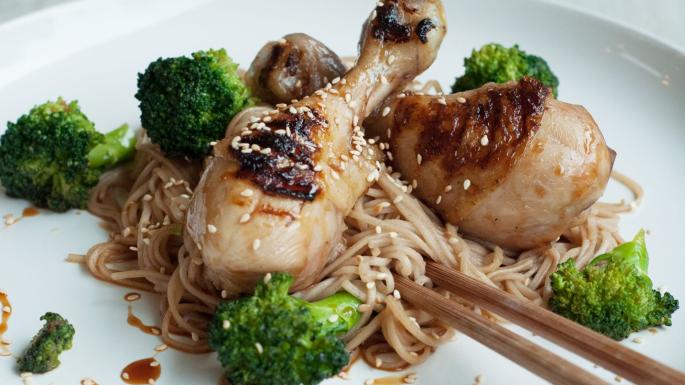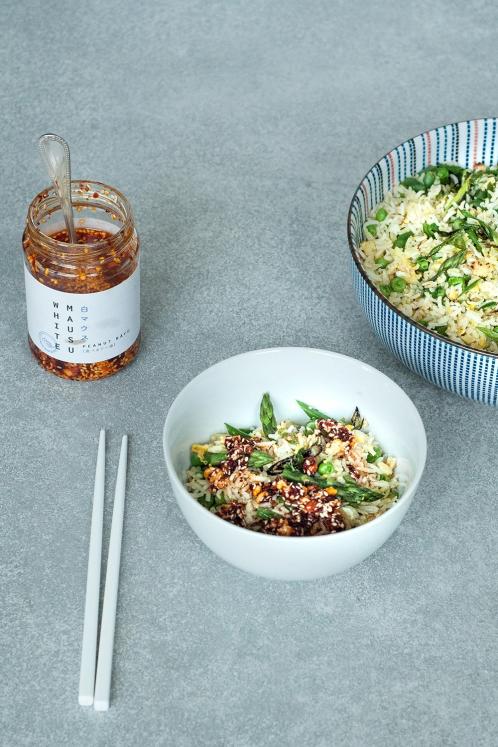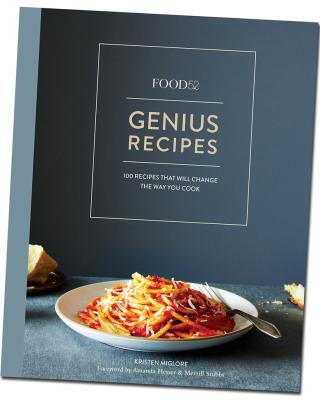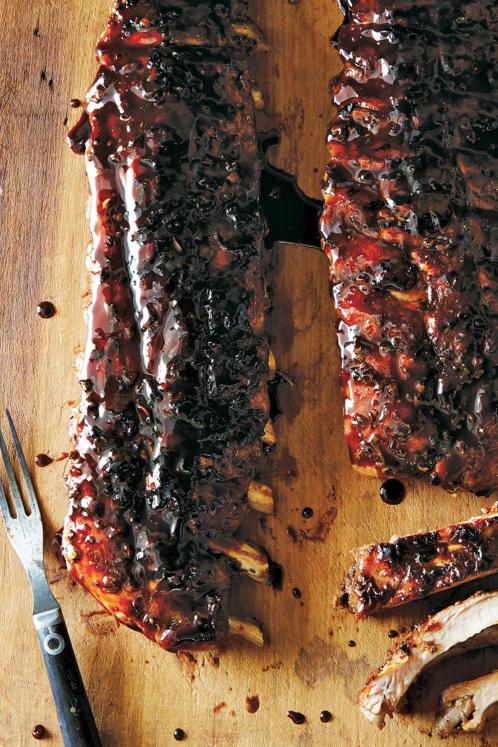Preparing a quick and easy midweek meal for the whole family is not child’s play, but these Asian-inspired recipe ideas will appeal to adults and fussy five-year-olds alike, writes Cliodhna Prendergast
We like to eat together as a family in the evening — it is a great way to catch up with the goings-on in young lives and indeed with the adults, too. However, if there is one thing I have learnt over years of putting the dinner on the table it is that it’s difficult to please everyone all the time. You need a thick skin not to let the complaints get to you from time to time. Then comes the challenge of getting the children to eat what you put on the table.
I remember when the kids were very young I would try to read them a book during dinner. I used to refuse to turn the page unless everyone was eating well. It worked, for a while.
Another trick was to play a game of word tennis: if you were not eating, you had to drop out for a round. This still works well, although it can get a bit out of hand as arguments arise and our five-year-old leaves the table in indignant protest, thereby defeating the purpose.
With three children in the house there is always a time when someone at the table doesn’t like what they are being served. The youngest might profess his hatred for every dinner as a matter of principle but then eat it up greedily once he felt his objection was lodged.
I would try to simplify dishes but then get fed up eating “kid food” — plus cooking one dinner every evening is enough for me. I don’t like having the weeknight dishes on rotation, either. I can see how it simplifies life but it also makes it boring. One thing I have noticed, however, is children’s love of Asian food — a great fallback when you just want everybody to be happy, and you can enjoy a little peace.
This recipe for teriyaki chicken with ginger broccoli and soba noodles is a simple midweek crowd-pleaser. Soy sauce does have a high salt content, but at least you know exactly how much is in this teriyaki sauce, and if it helps your kids eat some fresh greens I don’t see the harm every now and again. You could use soy sauce with a lower salt content, which doesn’t taste quite as good but is a viable alternative for young children and anyone requiring a salt-sensitive diet.
Another dish that is always a winner in our house is egg-fried rice: quick and easy on a school night. It’s a brilliant way to get kids to eat green vegetables, and any meat you have left over from a roast is a good addition, particularly pork belly or lamb, with leftover rice. I make double the rice I need for another dish just for this recipe, although note that you should not keep leftover rice for more than a couple of days (even in the fridge) as it goes off quickly.
To spice it up a bit and add another dimension to your fried rice, Katie Sanderson of Dillisk and Living Dinners, produces a fantastic peanut rayu. This is a Japanese/Chinese-influenced dressing made from sesame seeds and peanuts with a kick. It will dress up vegetables, stir-fries and eggs, and is available at the Dublin Flea in Newmarket and at Ard Bia in Galway.
Teriyaki chicken with ginger broccoli and soba noodles
Serves 4-6
What you will need
100ml/4 fl oz mirin
100ml/4 fl oz soy sauce
2 tbsp sugar
8 chicken drumsticks
Soba noodles (4-6 packet portions)
Small handful of sesame seeds
1 tsp sesame oil
1 tsp grated ginger
1½ heads of broccoli, lightly steamed
How to prepare
Preheat the oven to 200C/gas mark 6.
To make the teriyaki sauce, place the mirin, soy sauce and sugar into a pot, and simmer over a gentle heat for 10-15 minutes until it thickens to a slightly syrupy consistency; it will thicken more as it cools. Remove from the heat and allow to cool.
Heat a griddle pan until piping hot and put the chicken drumsticks on dry. Sear for about five minutes on either side, then place the pan in the oven for a further 10 minutes. Meanwhile, boil some water for the noodles and cook for four minutes (or according to instructions) and drain, leaving about a tablespoon of water in the pot. Return the noodles to the pot until ready to use.
Heat a wok, add the sesame seeds and lightly toast. Remove to a dish and set aside. Put the wok back on a medium-to-high heat and add the sesame oil and ginger. Cook the ginger for about 30 seconds then add the broccoli. Toss the broccoli in the wok and warm through, add the soba noodles and another tablespoon of water if it seems dry. Then add the teriyaki sauce to taste and mix through.
Remove the chicken from the oven and brush with a good layer of teriyaki sauce. Serve with the noodles and sprinkle the toasted sesame seeds on top.
Egg-fried rice with green vegetables
Serves 4-6

Spicy peanut sauce turns up the heat in egg-fried rice
What you will need
225g/8oz rice
350ml/12 fl oz cold water
100g/3½oz french beans, cooked
8-10 asparagus spears, trimmed and lightly cooked (or any other vegetables of your choosing)
2 tbsp groundnut/sunflower oil
3 spring onions, thinly sliced
2 eggs
100g/3½oz frozen peas, cooked
300g/10½oz leftover cooked meat, thinly sliced (optional)
Katie Sanderson’s White Mausu peanut rayu (optional), to taste
How to prepare
Wash the rice in cold water, drain and place in a large saucepan (a casserole pan works best) with the cold water and a pinch of salt. Bring to a simmer, stir, place a tight-fitting lid on the pan and simmer at the lowest heat for 12-15 minutes. Check to see if it is cooked but replace the lid immediately to keep in the steam. Allow the rice to sit for 10 minutes to absorb the steam.
Finely slice the french beans (children are much more likely to eat them this way). Slice the bottom of the asparagus spears, leaving the tips whole.
Place a wok on a medium-to-high heat and add the oil, then the spring onions. Toss for one minute and remove from the pan with a slotted spoon to use later. Next, turn the heat up to high and add the cooked rice, tossing it in the wok until heated and coated in oil. Push the rice to the side of the wok, leaving space to scramble the eggs.
Crack the two eggs into the centre, scramble quickly with a fork and then mix through the rest of the rice. Continue to stir-fry the rice until it begins to smell fragrant and toast a little.
Add the chopped green beans, peas, asparagus and leftover meat (if using). Toss for a moment in the wok and serve with the spring onions sprinkled on top.
To spice things up a little, add a few teaspoons of peanut rayu.
Fried rice facts
Cold rice is best for stir-frying as rice that is just cooked holds a lot of water and can lead to a sticky, clumpy result when fried. However, if you have a rice cooker or you steam the rice using the method above, the water content is lower and you can add it straight to the wok. For ease, a rough guide for the rice and water ratio is to cover the rinsed uncooked rice with water until it comes to about a half-a-thumbnail’s depth above the rice.
Cook’s library
Food52: Genius Recipes by Kristen Miglore
(Ten Speed Press, €20.99, kennys.ie)

This collection of recipes was compiled by Kristen Miglore, executive editor of the incredibly useful food52.com culinary website. If you are not familiar with it, food52.com was put together by former New York Times food editor Amanda Hesser and food writer Merrill Stubbs, and is one of the go-to sites for great recipes and kitchen queries. It also has an online kitchen/tableware shop and is well worth checking out.
Miglore, who started the Genius Recipes column at food52.com, has carefully chosen 100 of the site’s best recipes — a bar that’s set high. There are techniques in each recipe that will make your cooking easier and more delicious, and many are simple recipes that will make you rethink the way you cook. These are dishes you will cook time and time again, because they work.
Every recipe I have tried from this book has worked, apart from the most famous one, Marcella Hazan’s tomato sauce. I now know it was the out-of-season tomatoes I bought that were at fault. They do suggest you can use tinned tomatoes, and anyone trying this dish during winter should heed this advice.
I have chosen the ribs recipe by Ian Knauer, former food editor of now-defunct Gourmet magazine, to share with you as they are my children’s favourite dish and, while gloriously sticky, they are in no way gloopy. You do have to prepare them a day in advance, but they are worth it.
Ian Knauer’s Sticky Balsamic Ribs
Usually, when cooking ribs at home, we’re told to take it low and slow. Instead, Ian Knauer tells you to cook them fast and reckless — at 220C/gas mark 7.
Baby back ribs are more forgiving than bigger spare ribs, and here they get amply marinated and steamed so they come out surprisingly tender, yet sturdy enough to hold up to flipping on the grill.
Go too low and slow, and you end up with meat falling to pieces and bones sliding out all over the place.
Unlike barbecue recipes that call for a long list of dried spices that come together mysteriously, this one requires only a handful of feisty ingredients — and it’s clear what each one is doing there. Rosemary and garlic — our friends in so many pork recipes — are the savoury background; cayenne sharpens the garlic’s sting; and balsamic vinegar and brown sugar bring the “sticky”, with the sugar levelling out the vinegar’s sour.

Baby back ribs are more forgiving than bigger spare ribs
Serves 8
What you will need
8 large cloves garlic
4 tsp salt
2 tbsp finely chopped rosemary
110g/4oz dark brown sugar plus 2 tbsp, divided
240ml/9 fl oz balsamic vinegar plus 2 tbsp, divided
1 tsp cayenne pepper
1 tsp freshly ground black pepper
3.6kg/8lb baby back pork ribs
240ml/9 fl oz water
475ml/17 fl oz hot water
How to prepare
Mince and mash the garlic to a paste with 1 tsp of the salt. Stir together with the rosemary, 2 tbsp of the brown sugar, 2 tbsp of the balsamic vinegar, the cayenne pepper, the remaining salt and the black pepper. Rub evenly all over the ribs and transfer to two large roasting trays in a single layer, meaty-side up. Marinate, chilled, for at least eight hours and up to 24 hours.
Alternatively, marinate in a zippered bag or bowl covered with clingfilm.
When ready to cook, preheat the oven to 220C/gas mark 7 with racks in the upper and lower thirds of the oven.
Pour 120ml/4½ fl oz water into each roasting tray and tightly cover with foil. Roast the ribs, switching the position of the trays halfway through, until the meat is very tender: about 1¾ hours. Remove the trays from the oven and transfer the ribs to a platter.
Add half the hot water to each roasting tray and scrape up the brown bits. Skim off and discard the fat, then transfer the liquid to a 25cm frying pan. Add the remaining 240ml/9 fl oz of balsamic vinegar and 110g/4oz of brown sugar, and bring to a boil, stirring occasionally. Boil for about 15 minutes until thick and syrupy and reduced to about 240ml/9 fl oz.
On a charcoal grill, prepare a fire for direct-heat cooking over medium-hot charcoal. Alternatively, preheat a gas grill to medium and grill (that is, broil, 3in-4in from heat) for about eight minutes. Brush some of the glaze onto both sides of the racks of ribs and grill for a further six minutes, turning occasionally. Brush the ribs with more glaze and serve with the remaining glaze on the side.
